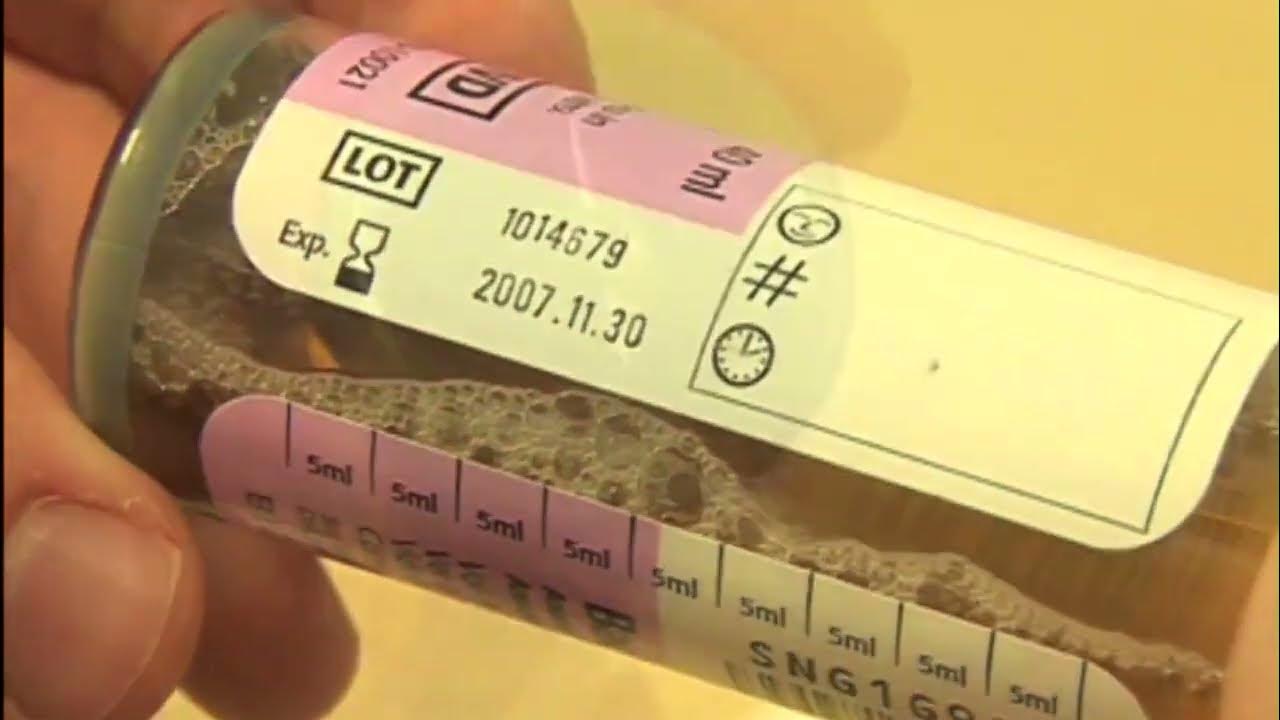Blood Collection from Poultry
Summary
TLDRThis instructional video teaches the safe and effective process of collecting blood samples from poultry. It covers essential equipment, proper bird handling techniques, and detailed steps for drawing blood, whether performed by one or two people. The video also provides guidelines on how to store, handle, and ship the blood samples for testing. Key safety measures are emphasized to ensure the well-being of the bird and the quality of the sample. This comprehensive guide is valuable for veterinarians and poultry technicians involved in diagnostic testing and health monitoring of poultry.
Takeaways
- 😀 Proper blood sample collection from poultry is essential for veterinarians, poultry technicians, and caretakers to test for antibodies from infectious diseases.
- 😀 A sterile 3-5 milliliter syringe and an appropriately sized needle (23-gauge for smaller birds, 20-21 gauge for larger birds) are required for blood collection.
- 😀 Blood samples should be collected in red top glass clot tubes or sterile plastic microcentrifuge tubes, which are free of anticoagulants like heparin.
- 😀 The brachial vein (also called the medial wing vein) is the most common site for drawing blood in poultry and is located on the underside of the bird’s wing.
- 😀 You should never collect more than 1% of the bird's body weight in blood; typically, 1-3 milliliters is sufficient for testing.
- 😀 If two people are involved in the procedure, one should restrain the bird while the other collects the blood sample.
- 😀 When drawing blood, the needle should be inserted parallel to the skin, with the bevel facing up, and care should be taken to avoid damaging the vein or feather follicles.
- 😀 If collecting blood alone, ensure proper restraint of the bird by supporting its body and wings. Take care to avoid excessive pressure on the bird’s neck or keel.
- 😀 After blood collection, transfer the blood to a collection vial and allow it to clot for separation of the serum from red and white blood cells.
- 😀 Blood samples should be handled carefully to avoid hemolysis, which can negatively affect test results. Keep the samples at room temperature for 30 minutes before refrigeration.
- 😀 When shipping blood samples for testing, pack them with soft materials in a cooler, include necessary paperwork, and ensure the samples are kept cool during transit (overnight courier recommended).
Q & A
Why is collecting blood samples from poultry important?
-Collecting blood samples from poultry is important to test for antibodies that birds produce in response to infectious diseases, which helps in diagnosing and managing poultry health.
What is the most common reason for collecting blood samples from poultry?
-The most common reason for collecting blood samples is to test for antibodies that birds produce after being exposed to infectious diseases.
What supplies are needed to collect blood samples from poultry?
-You'll need sterile 3 to 5 milliliter syringes, appropriate gauge needles, blood collection vials, alcohol wipes, permanent markers for labeling, plastic bags for storage, and packaging materials for shipping.
What type of needle is recommended for collecting blood from small birds like young broilers or bantam poultry?
-For small birds like young broilers or bantam poultry, a 23 gauge needle, one-half to one inch in length, is recommended.
How much blood should be collected from a healthy bird?
-Normally, 1 to 3 milliliters of blood should be collected. The maximum amount of blood you can safely collect is 1% of the bird's body weight.
What is the recommended method for handling the bird during blood collection?
-When handling the bird, it is important to restrain the bird carefully to avoid injury and stress. This may involve two people, one to hold the bird and the other to collect the blood, or one person can perform the procedure alone with proper restraint.
What is the brachial vein, and why is it important for blood collection?
-The brachial vein, also called the medial wing vein, is located on the underside of the bird’s wing and is the most common site for blood collection. It is easily visible and provides a good-quality sample.
What should you do if the blood stops flowing during collection?
-If the blood stops flowing, gently turn the syringe or slightly withdraw the needle. Avoid excessive sideways movement of the needle to prevent collapsing the vein.
How should blood samples be stored before shipping?
-Blood samples should be kept at room temperature for at least 30 minutes to allow the blood to clot. The sample should be stored in a vial or tube, with the blood lying flat to allow separation of serum from clot.
What precautions should be taken when shipping blood samples?
-When shipping blood samples, double-bag the blood vials and paperwork, use soft packing material like bubble wrap, and place freezer packs inside the cooler to maintain a cool temperature. The samples should be shipped via an overnight courier.
Outlines

This section is available to paid users only. Please upgrade to access this part.
Upgrade NowMindmap

This section is available to paid users only. Please upgrade to access this part.
Upgrade NowKeywords

This section is available to paid users only. Please upgrade to access this part.
Upgrade NowHighlights

This section is available to paid users only. Please upgrade to access this part.
Upgrade NowTranscripts

This section is available to paid users only. Please upgrade to access this part.
Upgrade NowBrowse More Related Video
5.0 / 5 (0 votes)





